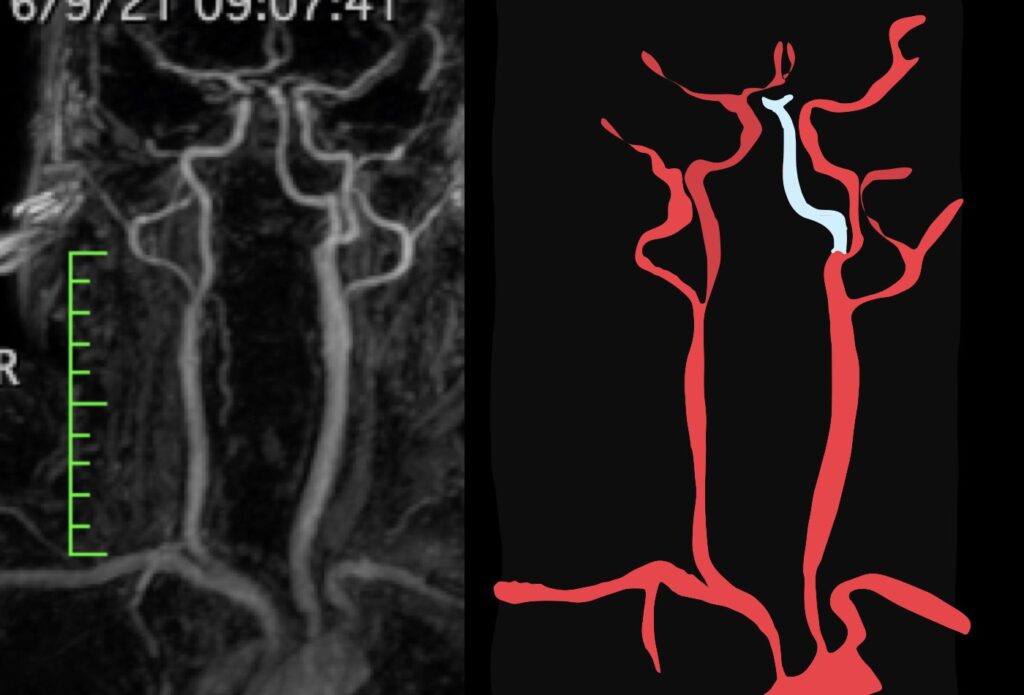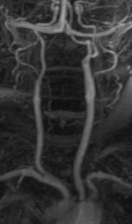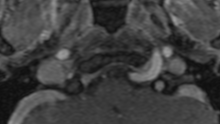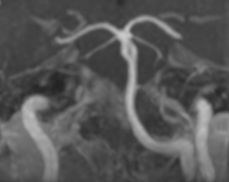
The persistent hypoglossal artery is the second most common carotid-basilar anastomosis. the prevalence is 0.1% to 0.2%. the primitive hypoglossal artery originates from the cervical part of the internal carotid artery at the level of C-1 to C-3.
After a tortuous course, it penetrates the enlarged hypoglossal canal and joins the lower portion of the basilar artery. When it is large, the proximal vertebral arteries usually are hypoplastic and the ipsilateral vertebral artery may be absent. the persistent hypoglossal artery is more frequent in females and on the left side as in our case.



The proatlantal intersegmental artery enters the posterior fossa through the foramen magnum, following the course of the vertebral artery. Therefore, differentiation between these primitive arteries on MR will be easy by demonstrating the foramen through which it passes.



This vascular anastomosis may be of functional importance in patients with carotid stenosis and may provide a pathway for cerebral embolism.
Reference: AJNR 16:990–992, Apr 1995 0195-6108/95/1604 –0990